Text
Note for Tutor
Tumblr keeps glitching on me saying it hasn't uploaded somthing but I can't figure out what is missing so I have placed it all in my sketchbook as a backup.
10 Animals in danger due to climate change
Our planet is getting warmer, the threat to climate change is real, and our dependence on fossil fuels is the biggest contributor. Unless we make some radical changes, global temperatures will continue to rise and it will have severe consequences for humans and animals.
Amphibians such as frogs are vulnerable to desiccation and require moist conditions to reproduce. They are thus at risk from climate change. Decreasing water bodies in Yellowstone National Park, for example, is driving declines in the Columbia Spotted Frog population. Climate change is also causing the rapid spread of the deadly chytrid fungus Batrachochytrium Dendrobatidis, which is endangering amphibians worldwide.
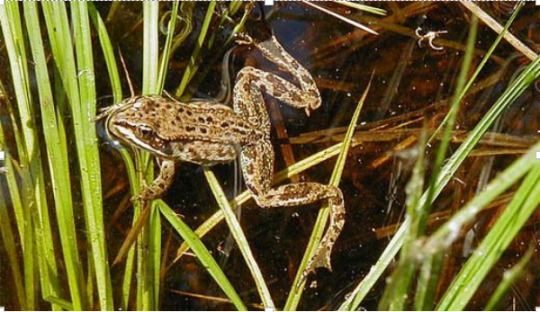
Staghorn Coral (Acropora Cevicornis) has experienced a population decline of over 80% since the 1970’s, mostly due to climate change. It is listed as Critically Endangered on The IUCN Red List of Threatened Species. Staghorn coral is particularly vulnerable to bleaching, whereby increasing water temperatures cause coral to expel the symbiotic algae that provide its nutrition. Coral reefs are some of the most biodiverse ecosystems on Earth – as ocean temperatures continue to rise, we also risk losing the countless species that depend on reefs for their survival, such as clownfish and hawksbill turtles.
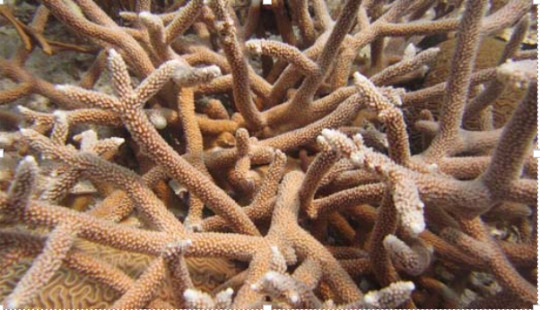
Close relatives of rabbits and hares, Pikas are adapted to cold alpine conditions and are very intolerant of high temperatures. The American Pika (Ochotona Princeps) has been retreating upslope to escape rising temperatures and it is feared the species will eventually have nowhere left to go. In some locations, American Pika populations have already entirely disappeared. Other Pika species native to Eastern Europe and Asia are facing the same dire fate.
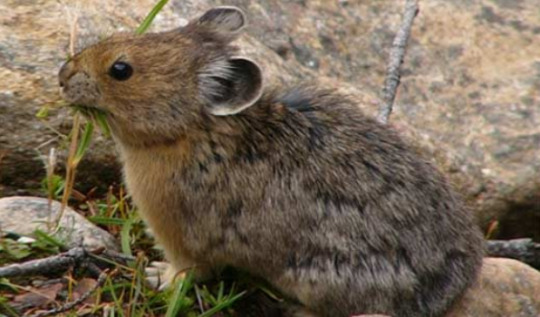
The Adélie Penguin (Pygoscelis Adeliae), a well-established resident of Antarctica, is facing tough times due to climate change. The birds are declining on the West Antarctic Peninsula, which is one of the most rapidly warming areas on Earth. The Adélie Penguin’s coastal nesting grounds are becoming increasingly unsuitable for chick survival, and sustained periods of warmer than usual ocean temperatures is negatively affecting the ability of prey such as fish and krill to survive.

The Leatherback Sea Turtle (Dermochelys Coriacea), weighing in at half a tonne, is a giant among reptiles. Like all marine turtles, Leatherbacks are threatened by bycatch, poaching and pollution. Climate change is an additional, rapidly emerging threat to marine turtles globally. Rising sea levels and extreme weather events wash nests away and decrease nesting habitat. In sea turtles, sand temperature determines the gender of developing young – warmer eggs turn into females, cooler eggs turn into males. Under global warming, turtle sex ratios are likely to become skewed, resulting in population decrease.
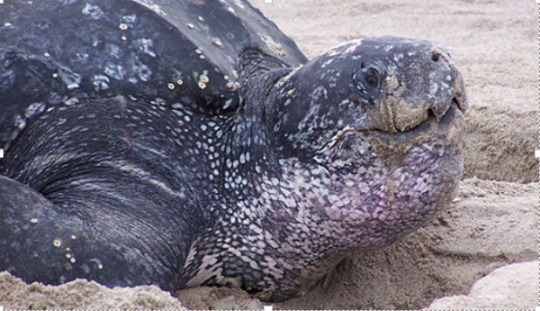
The Koala (Phascolarctos Cinereus), Australia’s most iconic fluffy marsupial, is likely to become rarer over the next century due to global warming. Koalas have an extremely specialised diet consisting only of eucalyptus leaves. Increasing carbon dioxide levels in the atmosphere are decreasing the nutritional value of leaves, resulting in Koala malnutrition and starvation. Longer and more frequent droughts will increase the occurrence of bushfires, which kill millions of forest-dwelling animals like Koalas. Koalas will also increasingly be forced to descend from trees in search of water and new habitats during dry conditions, exposing them to predators and road traffic.

A popular food fish, Atlantic Cod (Gadus Morhua) has been the victim of decades of disastrous overfishing. While the implementation of fishing quotas helped stocks to recover, recent rapid ocean warming has severely impacted cod spawning and survival, causing populations to plummet again. It is thought that warmer waters decrease the availability of zooplankton critical to juvenile fish survival and development. Moreover, to escape the high temperatures, young fish are likely to venture into deep water where they at greater risk of predation.

Beautiful Monarch Butterflies (Danaus Plexippus) are famous for their impressive migrations across North America to reach southern overwintering grounds. Like all butterflies, the Monarch is very sensitive to weather and climate. Increased frequency of extreme weather events is threatening the future of this charismatic species. Furthermore, Monarch caterpillars eat only milkweed – as the climate continues to warm, the butterfly’s range is becoming drier, resulting in loss of vital food plants.

Ringed Seals (Pusa Hispida), polar bears’ favourite prey, are highly dependent on Arctic sea ice and almost never come onto land. Warming spring temperatures and early sea ice breakup are causing nursing pups to be prematurely separated from their mothers. Additionally, warmer ocean temperatures are likely to boost seal parasite populations and the forced migration of seals to more stable ice habitats will facilitate the spread of disease.
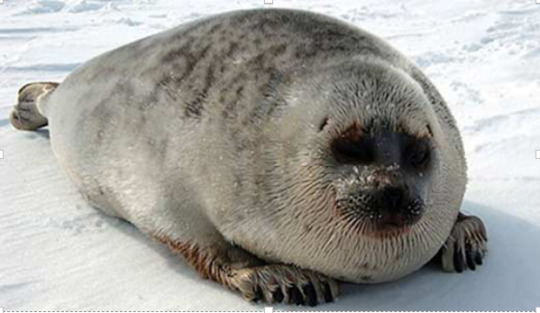
The majestic Polar Bear (Ursus Maritimus), a flagship for climate change awareness, is facing an uncertain future due to dwindling sea ice in its Arctic habitat. Longer, warmer summers are causing much of the Arctic Ocean to be ice-free for extended periods of time, decreasing the bears’ access to their primary prey – seals. Consequently, the bears are forced to spend more time foraging on land, where they are at risk of coming into conflict with humans.
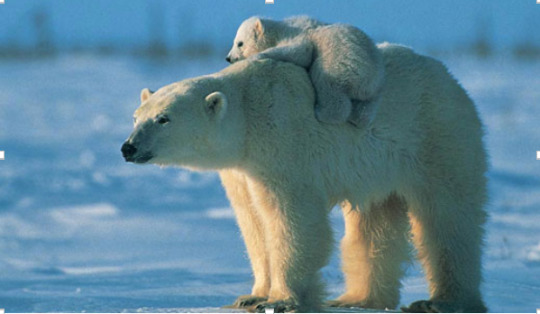
2 notes
·
View notes
Text
Research into Climate change weather
For my theme I will be focusing on climate change and how it effects the natural environment which includes the animals and plant life. I will find my research by reading articles online and in books and by observing the land around me.
I have chosen climate change because I've always been interested in nature, the thing I like most is taken a long walk into a forest where I can just hear the birds singing or see a deer wondering by. The thing that made me choose climate change was the most recent weather we had over winter, I thought that the amount of storms we have experienced.
What storms have struck the UK this year?
As of January 2022, the UK has experienced a concerning total of five storms already.
Storm Malik was named on January 28, 2022, with the Met Office confirming its date of impact to be January 29, 2022.
Storm Corrie was named on January 29, 2022, with its date of impact listed to be January 30 to 31, 2022.
Storm Dudley, named on February 14, 2022, soon followed with an impact date of February 16 to 17, 2022.
Storm Eunice, the most severe yet, claimed at least four lives as winds of up to 122mph swept across Britain, was named on February 14, 2022, and impacted the UK on February 18, 2022.

With all the storms we've the previous year's none have been this bad, I remember being kept awake from the wind and rain pounding on my windows just waiting for them to break and then the sudden loud thud of one of my trees falling down that shocked me fully awake and then a few days later another storm hit just as bad where I had to tie a tree down with a rock to prevent it falling onto the house.
Last year there was a snow storm that pounded snow and ice onto the windows that made it sound like it was going to break through any moment, when I was a young girl I never remember the weather getting as bad as it is now, even when I lived near the ocean. I look back now at news articles on my old home from when I was a child and the difference with the weather from then to now is a dramatic change, the sea levels have risen and people had to evacuate the sea front because the waves came crashing into houses which has never happened before.
Climate change 2010 article
Glaciers serve as early indicators of climate change. Over the last 35 years, a research team has recovered ice-core records of climatic and environmental variations from the polar regions and from low-latitude high-elevation ice fields from 16 countries. The ongoing widespread melting of high-elevation glaciers and ice caps, particularly in low to middle latitudes, provides some of the strongest evidence to date that a large-scale, pervasive, and, in some cases, rapid change in Earth's climate system is underway. This paper highlights observations of 20th and 21st century glacier shrinkage in the Andes, the Himalayas, and on Mount Kilimanjaro. Ice cores retrieved from shrinking glaciers around the world confirm their continuous existence for periods ranging from hundreds of years to multiple millennia, suggesting that climatological conditions that dominate those regions today are different from those under which these ice fields originally accumulated and have been sustained. The current warming is therefore unusual when viewed from the millennial perspective provided by multiple lines of proxy evidence and the 160-year record of direct temperature measurements. Despite all this evidence, plus the well-documented continual increase in atmospheric greenhouse gas concentrations, societies have taken little action to address this global-scale problem. Hence, the rate of global carbon dioxide emissions continues to accelerate. As a result of our inaction, we have three options: mitigation, adaptation, and suffering
Climate change 2022 article
As the climate evolves over the next century, the interaction of accelerating sea level rise (SLR) and storms, combines with confining development and infrastructure, will place greater stresses on physical, ecological, and human systems along with ocean-land margin. Many of these values coastal systems could reach "tipping points," at which hazard exposure substantially increases and threatens the present –day form, function, and viability of communities, infrastructure, and ecosystems. Determining the timing and nature of these tipping points is essential for effective climate adaptation planning.

0 notes
Text
Photographs


These are some photographs of the animals and plants I've focused on for my project. Some I took my self and some I found on google. I have noted down where I got each one in the book.


I left these photographs pages for last so people who look through my book go past my sketches and they see my work and then when they get to the very end they can see what the animals truly look like.
0 notes
Text
Bee stitch work and aqua painting/drawing

The bee work was created to go along side the bee page, so far I've made a crochet bee hive and bee and then I have this half completed piece which went wrong half way through so this is as far as I got with it. The threat got stuck because I used too many threads at once.

I forgot I didn't make a turtle page so instead I wrote the information for it on the step by step of my Amigurumi turtle I chose to draw a turtle to go along side that so people could get a better visual of what a turtle looks like.
The jelly fish was the jellyfish I mentioned previously on another page, it's the idea I had to create my amigurumi jellyfish.
0 notes
Text
Fine liner work

At the beginning I was aiming for a more feminine and Victorian approach to my climate change theme but I ended up using other media like Amigurumi and paint which didn't really go with the Victorian theme. I do like how these turned out still, if I were to display them they would be a set along side some of the other work. The book would be layed infont so people could turn the page and read about each piece. Why I made it and what it means and how climate change is involved.
0 notes
Text
Stitch and print work


This is for the pipistrelle bat page and so is the bat sewing piece.
I attempted to create a hedgehog but it didn't work out as planned. I described what happened in the book.
0 notes
Text
Stitch work bugs

I created these based on the swollowtail page, the Caterpillar is a swollowtail young and the butterflies were based of off monarch butterfly.
I choose to stick them in a frame because I had to use the hoops for another project. The butterflies took me 2 weeks to make and the caterpillar took about an hour.
I did like creating these but for the butterflies it started to get difficult to get the threat through after a while.
0 notes
Text
Shark and crab Amigurumi

These two are the last of my amigurumi work. This page describes everything about them, where you can find them, what they look like and how climate change is effectig them. The crab is small and the shark is the size of a tennis ball just a bit wider.
0 notes
Text
Bee idea for Bee page



I mentioned a while back that I wanted to create a bee to go along side a beehive I made and originally I wanted to make a red tailed bumblebee but I didn't have enough colours and the colours I did have weren't the same thickness of yarn. I instead chose to use yellow for a bumblebee and then grey as I didn't have black.
It was fairly easy to make but I struggled to attach the wings and I couldn't figure out how to make the rear but round. I did want to add a stinger but I ran out of yarn.

Mushroom work
At the beginning I told a tutor I was going to attempt to make a mushroom amigurumi and this is how that went. I did this to go along with the page where the arm idea is. It was just to give people something to feel whilst looking at the images I've drawn and taken photos of.



If you stood it next to a a5 book it be about the same height.
0 notes
Text
Modroc arm idea

This is the arm idea I had from the third page. It did not go as planned..I used modroc and when it dried my fingers were bent at an angle so I couldn't remove it from my hand. To get it off I had to cut it off and then when I did get it off the fingers fell off. I didn't have a better photo the pink is from my plant light.

I think I would like to attempt to make this again some time in the future but right now I've run out of supplies.
0 notes
Text
Amigurumi JellyFish




This Jellyfish Is the idea i had from the jellyfish page. I said I wanted to create something that resembled a jellyfish something that people could interact with. I created this jellyfish to be 7ft because I recently saw a jellyfish in person and I was amazed at the size, I thought if i made it to be a realistic scale then it would help bring awareness to how beautiful they are and that they might be gone soon if we don't do somthing.
I created my amigurumi piece based on this JellyFish I saw at the sealife centre, I didn't have the correct coloured yarn for it but I tried to get the scale correct.
0 notes
Text
Amigurumi Octopus

These octopus were created from the idea I had back on the octopus page I made. Each octopus represents a different species and their colours represent the way they camouflage. They are all different sizes from small the large.
I haven't been crotheting long so I'm not very good at it at the moment. I had plans to make a set of more realistic octopus with longer arms but I couldn't quite figure it out.

The idea for this work is that people when reading the correct page will be able to interact with an item resembling what animal is on the page and hopefully it will help them visualise the animal better and think about how they might not be here in the future if things continue the way they are.








0 notes
Text
How climate change will effect the earth

This collection of work consists of 6 different A4 marbling pieces. Each piece represents what will happen to the earth in the future if climate change continues on the path it is on.
The earth right now has melting icebergs but things are only going to get worse. Things that could happen in the future are droughts, flooding which will cause a great amount of damage and hurricanes that will be stronger and more deadly than what some people experience now.






0 notes
Text
Nature diary Sharks

About
Great white sharks are the largest predatory fish on earth they grow to an average of 15 feet in length, though specimens exceeding 20 feet weighing up to 5,000 pounds have been recorded.
They have slate grey upper bodies to blend in with the rocky coastal sea floor, but they get their names from their white under bellies.
Hunting
Highly adapted predators, their mouths are lines with up to 300 serrated, triangular teeth arranged in several rows, and they have exceptional sense of smell to detect prey. They even have organs that can sense the tiny electromagnetic fields generated by animals.
Their prey includes other sharks, crustaceans, mollus, and seabirds. Larger sharks will also prey on sea lions, seals, and small toothed whales like orcas.
Climate change
Warmer ocean temperatures caused by climate change are thought to have a role in outbreaks of skin disease found on white sharks in Malaysia coral.
Rising temperatures also increase the risk of baby sharks being born smaller and weaker less able to survive to adulthood.
Climate change also affects shifts in distribution of fish population, changes in migratory patterns, changes in the availability of suitable habitat and changes in the availability of food.
0 notes
Text
Nature Diary JellyFish

About
Most species of octopus are dome like in shape, with hanging tentacles that they use to sting and immobilize their prey. These animals have limited range of movement but can move small distances by expanding and contracting a muscle in their body.
Unlike a lot of other animals, Jellyfish don't have a brain, they also do not have blood or a heart.
Jelly fish are Bioluminesence. Many jellyfish species have this ability to produce their own light. This light is used primarily as a form of communication between animals and can be used for defence, offence and intraspecific communication.
Diet
The diet of jellyfish consists of small fish, fish eggs, larvae, plants and other small marine creatures.
Threats
The treats to jellyfish are sharks, birds, sea anemones and tuna.
Climate change
Jellyfish are affected by climate change but It can be both good and bad depending on the outcome of their food source.
If their food survives the change in temperatures then the population will increase and survive.
The other issue with climate change is that with raising temperatures comes a decrease in oxygen but scientists have discovered some JellyFish that can survive little oxygen.
Idea
I want to make something that resembles a jellyfish about that people can see the actually scale of one whilst reading the correct page but I'm not sure what media to use yet. I will pick either yarn, paint, pen or pencil.
0 notes
Text
Nature Dairy Octopus and Idea

About
Octopus come in all shapes and sizes. They are highly intelligent animals, masters of camouflage that have evolved an array of tricks over tens of millions of years to avoid or thwart would be attackers.
They can math the colours and even textures of their surroundings, allowing them to hide in plain sight.
There are over 300 species of octopus and they are found in every ocean, most live on the seafloor, but some like the paper nautilus, drift nearer to the surface.
Octopus are solitary animals, they typically love alone, sometimes in dens they build from rocks, sometimes in shells that they pull over themselves. Some even make doors by pulling a rock in front of the entrance.
Diet
Adult octopus feed on crabs, clams, snails, small fish and even other octopus.
Scale
The arms of a red octopus are 60 cm long the mantle is 20 cm wide and they can weight 110ibs
Climate change
With higher temperatures due to climate change, octopus are changing the way they behave and develop in ways that often times hinder their survival. Birth rates, populations size, and energy distribution are all affected drastically with slight change in temperatures.
Idea
I had an idea where I want to make something that resembles an octopus. The idea is that if I make an octopus then people who read my book will also be able to hold something, feel the shape and the tentacles to help them visualise an actually octopus and hopefully it will help bring awareness to how they are affected by climate change.
0 notes
Text
Nature diary Rabbit

About
Rabbits originated from Spain and south-west France. The rabbit was brought to England in the 12th century by the Norman's and key in captivity in warrens as a source of meat and fur.
Many escaped into the wild and eventually became so common that rarking them was no longer economic.
Beduas elf jts fast breeding, a diet of virtually ant vegetable matter and persecutions of predators, the rabbit slowly established itself in the wild in britian despite originally favouring a warmer, drier climate.
They are classed as a pest by farmers as they will often eat their crops.
Diet
Rabbits eat a wide range of fruit and veg such as dandelion, mallow, chickweed, and hawthorn. They also enjoy carrots, lettuce, apples, grass and hay.
Main predators
The main predators of rabbits are the stout and the fox, although, young rabbits also fall victim to birds of prey and weasels.
Other threats
Rabbits are also threatened by habitat loss, fragmentation and disease. They also suffer from hunting and trapping they are known as an invasive species because they have been introduced to all countries on all continents.
Climate change
Climate change will have a major effect on the ecology and distribution of many animal species. New research suggests rabbits will be practically hard hit as climate change alter their habitat.
0 notes